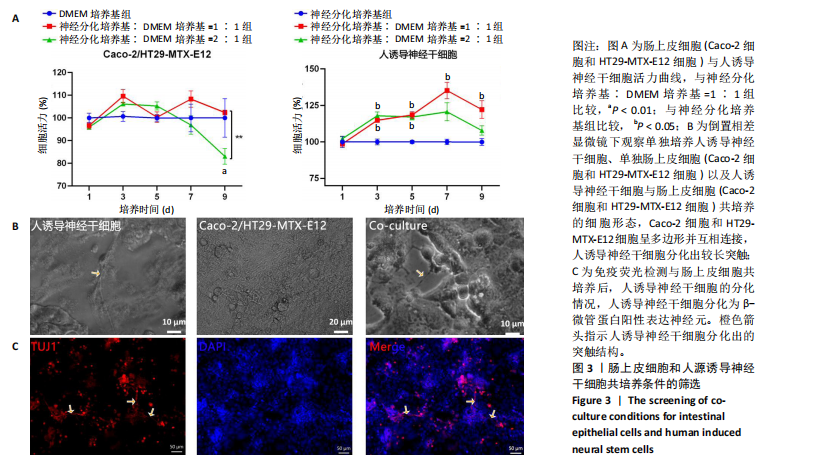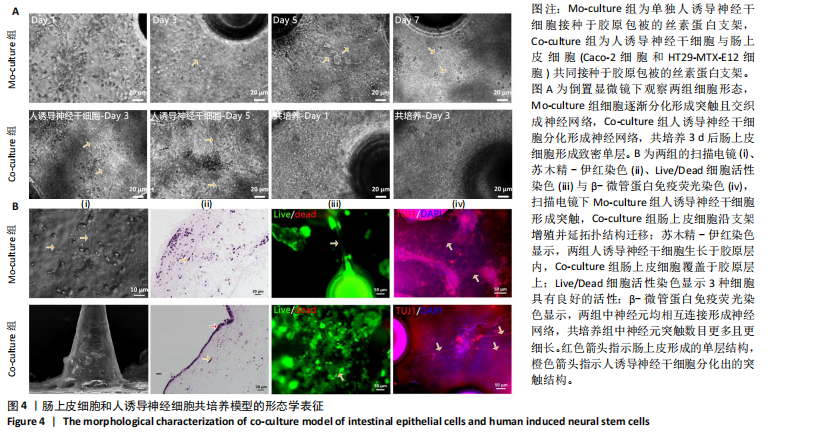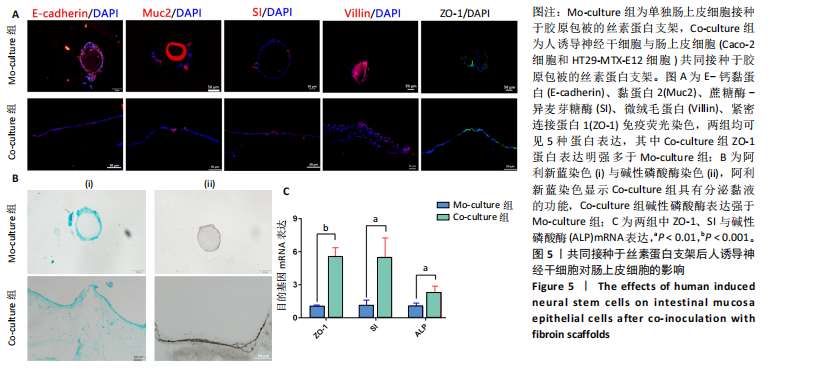[1] FURNESS JB. The enteric nervous system and neurogastroenterology. Nat Rev Gastroenterol Hepatol. 2012;9(5):286-294.
[2] SASSELLI V, PACHNIS V, BURNS AJ. The enteric nervous system. Dev Biol. 2012;366(1):64-73.
[3] RAO M, GERSHON MD. The bowel and beyond: the enteric nervous system in neurological disorders. Nat Rev Gastroenterol Hepatol. 2016;13(9):517-528.
[4] NGUYEN TT, BAUMANN P, TÜSCHER O, et al.The Aging Enteric Nervous System. Int J Mol Sci. 2023;24(11):9471.
[5] ANLAUF M, SCHÄFER MK, EIDEN L, et al. Chemical coding of the human gastrointestinal nervous system: cholinergic, VIPergic, and catecholaminergic phenotypes. J Comp Neurol. 2003;459(1):90-111.
[6] ZAKHEM E, RAGHAVAN S, BITAR KN. Neo-innervation of a bioengineered intestinal smooth muscle construct around chitosan scaffold. Biomaterials. 2014;35(6):1882-1889.
[7] WORKMAN MJ, MAHE MM, TRISNO S, et al. Engineered human pluripotent-stem-cell-derived intestinal tissues with a functional enteric nervous system. Nat Med. 2017;23(1):49-59.
[8] MANOUSIOUTHAKIS E, CHEN Y, CAIRNS DM, et al. Bioengineered in vitro enteric nervous system. J Tissue Eng Regen Med. 2019;13(9): 1712-1723.
[9] KIM R, SUNG JH. Recent Advances in Gut- and Gut-Organ-Axis-on-a-Chip Models. Adv Healthc Mater. 2024;13(21):e2302777.
[10] YILMAZ EG, HACıOSMANOĞLU N, JORDI SBU, et al. Revolutionizing IBD research with on-chip models of disease modeling and drug screening. Trends Biotechnol. 2024:S0167-7799(24)00284-1. doi: 10.1016/j.tibtech.2024.10.002.
[11] RUDOLPH SE, LONGO BN, TSE MW, et al. Crypt-Villus Scaffold Architecture for Bioengineering Functional Human Intestinal Epithelium. ACS Biomater Sci Eng. 2022;8(11):4942-4955.
[12] STENLING R, FREDRIKZON B, NYHLIN H, et al. Surface ultrastructure of the small intestine mucosa in healthy children and adults: a scanning electron microscopic study with some methodological aspects. Ultrastruct Pathol. 1984;6(2-3):131-140.
[13] BENJAMIN J, MAKHARIA G, AHUJA V, et al. Glutamine and whey protein improve intestinal permeability and morphology in patients with Crohn’s disease: a randomized controlled trial. Dig Dis Sci. 2012; 57(4):1000-1012.
[14] WANG Y, GUNASEKARA DB, REED MI, et al. A microengineered collagen scaffold for generating a polarized crypt-villus architecture of human small intestinal epithelium. Biomaterials. 2017;128:44-55.
[15] SHIN J, CARR A, CORNER GA, et al. The intestinal epithelial cell differentiation marker intestinal alkaline phosphatase (ALPi) is selectively induced by histone deacetylase inhibitors (HDACi) in colon cancer cells in a Kruppel-like factor 5 (KLF5)-dependent manner. J Biol Chem. 2014;289(36):25306-25316.
[16] CHEN WLK, SUTER E, MIYAZAKI H, et al. Synergistic Action of Diclofenac with Endotoxin-Mediated Inflammation Exacerbates Intestinal Injury in Vitro. ACS Infect Dis. 2021;7(4):838-848.
[17] ZHANG X, CHEN X, WANG Z, et al. Goblet cell-associated antigen passage: A gatekeeper of the intestinal immune system. Immunology. 2023;170(1):1-12.
[18] YANG S, CAI J, SU Q, et al. Human milk oligosaccharides combine with Bifidobacterium longum to form the “golden shield” of the infant intestine: metabolic strategies, health effects, and mechanisms of action. Gut Microbes. 2024;16(1):2430418.
[19] ALLAIRE JM, CROWLEY SM, LAW HT, et al. The Intestinal Epithelium: Central Coordinator of Mucosal Immunity. Trends Immunol. 2018; 39(9):677-696.
[20] GAO P, MORITA N, SHINKURA R. Role of mucosal IgA antibodies as novel therapies to enhance mucosal barriers. Semin Immunopathol. 2024;47(1):1.
[21] TULLIE L, JONES BC, DE COPPI P, et al. Building gut from scratch - progress and update of intestinal tissue engineering. Nat Rev Gastroenterol Hepatol. 2022;19(7):417-431.
[22] YANG S, LI Y, ZHANG Y, et al. Impact of chronic stress on intestinal mucosal immunity in colorectal cancer progression. Cytokine Growth Factor Rev. 2024;80:24-36.
[23] CHEESEMAN BL, ZHANG D, BINDER BJ, et al. Cell lineage tracing in the developing enteric nervous system: superstars revealed by experiment and simulation. J R Soc Interface. 2014;11(93):20130815.
[24] HAN W, TELLEZ LA, PERKINS MH, et al. A Neural Circuit for Gut-Induced Reward. Cell. 2018;175(3):665-678.e23.
[25] SCHNEIDER KM, BLANK N, ALVAREZ Y, et al. The enteric nervous system relays psychological stress to intestinal inflammation. Cell. 2023;186(13):2823-2838.e20.
[26] PUZAN M, HOSIC S, GHIO C, et al. Enteric Nervous System Regulation of Intestinal Stem Cell Differentiation and Epithelial Monolayer Function. Sci Rep. 2018;8(1):6313.
[27] SIWCZAK F, LOFFET E, KAMINSKA M, et al. Intestinal Stem Cell-on-Chip to Study Human Host-Microbiota Interaction. Front Immunol. 2021; 12:798552.
[28] BAYER F, DREMOVA O, KHUU MP, et al. The Interplay between Nutrition, Innate Immunity, and the Commensal Microbiota in Adaptive Intestinal Morphogenesis. Nutrients. 2021;13(7):2198.
[29] CHEN Y, RUDOLPH SE, LONGO BN, et al. Bioengineered 3D Tissue Model of Intestine Epithelium with Oxygen Gradients to Sustain Human Gut Microbiome. Adv Healthc Mater. 2022;11(16):e2200447.
[30] CARDENAS D, BHALCHANDRA S, LAMISERE H, et al. Two- and Three-Dimensional Bioengineered Human Intestinal Tissue Models for Cryptosporidium. Methods Mol Biol. 2020;2052:373-402.
[31] BAGHDADI MB, AYYAZ A, COQUENLORGE S, et al. Enteric glial cell heterogeneity regulates intestinal stem cell niches. Cell Stem Cell. 2022;29(1):86-100.e6.
[32] WALLRAPP A, YANG D, CHIU IM. Enteric glial cells mediate gut immunity and repair. Trends Neurosci. 2022;45(4):251-253.
[33] NAGY N, GOLDSTEIN AM. Enteric nervous system development: A crest cell’s journey from neural tube to colon. Semin Cell Dev Biol. 2017;66:94-106.
[34] MERAN L, TULLIE L, EATON S, et al. Bioengineering human intestinal mucosal grafts using patient-derived organoids, fibroblasts and scaffolds. Nat Protoc. 2023;18(1):108-135.
[35] POLING HM, SUNDARAM N, FISHER GW, et al. Human pluripotent stem cell-derived organoids repair damaged bowel in vivo. Cell Stem Cell. 2024;31(10):1513-1523.e7.
[36] RAKHILIN N, BARTH B, CHOI J, et al. Simultaneous optical and electrical in vivo analysis of the enteric nervous system. Nat Commun. 2016;7:11800.
[37] GOTO K, KATO G, KAWAHARA I, et al. In vivo imaging of enteric neurogenesis in the deep tissue of mouse small intestine. PLoS One. 2013;8(1):e54814.
[38] GRUBIŠIĆ V, MCCLAIN JL, FRIED DE, et al. Enteric Glia Modulate Macrophage Phenotype and Visceral Sensitivity following Inflammation. Cell Rep. 2020;32(10):108100.
[39] STAKENBORG M, ABDURAHIMAN S, DE SIMONE V, et al. Enteric glial cells favor accumulation of anti-inflammatory macrophages during the resolution of muscularis inflammation. Mucosal Immunol. 2022;15(6):1296-1308.
[40] LLORENTE C. The Imperative for Innovative Enteric Nervous System-Intestinal Organoid Co-Culture Models: Transforming GI Disease Modeling and Treatment. Cells. 2024;13(10):820.
[41] LIN X, GAUDINO SJ, JANG KK, et al.IL-17RA-signaling in Lgr5(+) intestinal stem cells induces expression of transcription factor ATOH1 to promote secretory cell lineage commitment. Immunity. 2022;55(2):237-253.e8.
|



